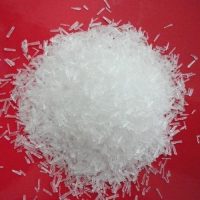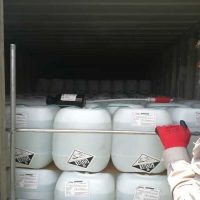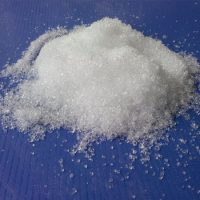Glycine
- CAS Number: 56-40-6
- Made in: China
- Phone Num : +86-2150591759
- E-mail: info@shanghaimetex.com
- Description
- analysis
- shipping & delivery
Description
Proteins are formed by putting together several amino acids according to a specific genetic code. Of the 20 known amino acids, the amino acid glycine, abbreviated to Gly, can be identified as the simplest amino acid in this group. This amino acid was first obtained in 1820 from the hydrolysis of proteins.
Glycine is widely used in the food, pharmaceutical, juice, and agriculture industries.

Physical and Chemical Properties:
Glycine is a colorless, sweet-tasting crystalline solid that is the only proteinogenic amino acid. This material can be stable in hydrophobic or hydrophilic environments. Amino acids are divided into two groups according to the type of functional groups in their structure, the first group is the group of neutral amino acids and the next group is acidic. Glycine can be classified as an acidic amino acid. This amino acid also shows different alkaline and acidic properties in the presence of different environments.
The most important physical and chemical properties of this compound can be summarized in the following table:
| Chemical formula | C2H5NO2 |
| Molecular Weight(g/mol) | 75.067 |
| Appearance | solid |
| odor | Odorless |
| Taste | Sweet |
| Density (g/mL at 25 °C) | 1.1607 |
| PH | 4.0 |
| Melting point (° C) | 233 (451 °F; 506 K) |
| Water Solubility (g/100 mL at 25 °C) | 24.99 |
| Solubility | soluble in pyridine, sparingly soluble in ethanol, insoluble in ether |
| color | White |
| form | crystals |
| Chemical Structure Depiction |  |
The Production of Glycine:
This chemical compound can be derived from other amino acids in the body, so the body does not need to use glycine supplements; But due to the use of glycine in industry, there is a need to produce it. This material is produced in two ways. The first method is chemical synthesis, from which glycine is typically produced. The chemical method is a fast method that leads to high yields. The second method is the production of glycine by the microbiological method. This method is a simple, biocompatible method that does not produce toxic additives.

During an important process involving the mixing of Trichloroacetic acid with ammonia and ammonium, two main substances called ammonium chloride and glycine are produced, which is the synthesis of the amino acid Strecker. This process is the main method of glycine production in Japan and the United States of America, which annually produces about fifteen thousand tons of this substance by this method.
Applications and Uses of Glycine:
- This amino acid is used in the juice and wine industry as a buffer or acidity modifier due to the combination of wine and beverages. It is also used to reduce the bitterness of saccharin extract.
- Glycine has the ability to inhibit the reproduction of Bacillus subtilis and E.coil bacteria; For this reason, it is used to disinfect peanuts and fish skin.
- It also has a preservative property, which may be due to the formation of complexes with metal ions.
- Glycine is a mediator in the synthesis of a variety of chemical products. This substance is used in the manufacture of glyphosate, iprodione, glyphosate, and other herbicides. It is also used as a drug intermediate such as thiamphenicol.
- This substance is mentioned as an important part of the solutions used in the SDS PAGE method, which is used for protein analysis. Glycine is also used as a buffering agent during electrophoresis, which maintains the pH and also prevents samples from being damaged during electrophoresis tests.
The physiological Function of Glycine:
- Glycine is one of the amino acids used to synthesize glutathione in the body. Glutathione is a natural antioxidant that reduces the risk of disease and aging by reducing the level of free radicals.
- This amino acid is needed for the synthesis of creatine in the body, which provides the energy needed to perform fast and short movements such as weightlifting. Creatine production increases your muscle strength and is good for bone health and brain function.

- Glycine is the main amino acid in collagen, and collagen is the most abundant protein in your body, so it is important to get enough glycine to support the body’s production of collagen.
- This amino acid has a calming effect on your brain and can have a hypnotic effect by lowering the body’s internal temperature.
Safety Information:
Glycine, a chemical that enters the body either orally or through skin absorption, is known to be a safe substance for most people. As mentioned, consumption of this substance by different people in most cases, will not have side effects; Except in special cases that cause digestive problems such as vomiting and nausea and in some cases cause stomach pain.
Packing and Storage:
Keep in a tightly closed container, stored in a cool, dry area away from sources of heat or ignition.












